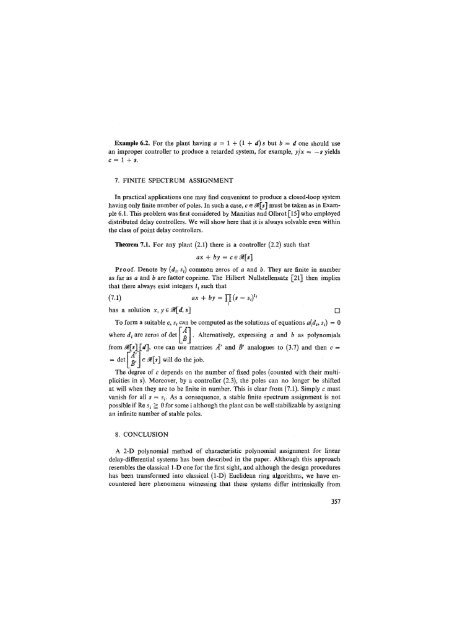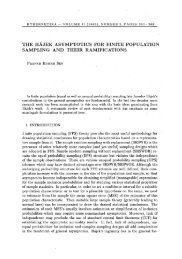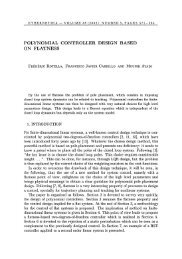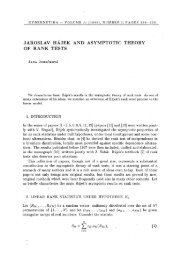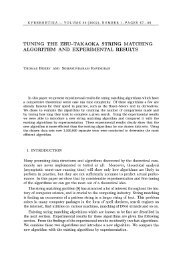characteristic polynomial assignment for delay ... - Kybernetika
characteristic polynomial assignment for delay ... - Kybernetika
characteristic polynomial assignment for delay ... - Kybernetika
You also want an ePaper? Increase the reach of your titles
YUMPU automatically turns print PDFs into web optimized ePapers that Google loves.
Example 6.2. For the plant having a = l+(l + d)sbutft = it f one should use<br />
an 1 improper<br />
controller to produce a retarded system, <strong>for</strong> example, y\x = -s yields<br />
_ i _»<br />
c = 1 + s.<br />
7. FINITE SPECTRUM ASSIGNMENT<br />
In practical applications one may find convenient to produce a closed-loop system<br />
having only finite number of poles. In such a case, c e 0t\s] must be taken as in Example<br />
6.L This problem was first considered by Manitius and Olbrot [15] who employed<br />
distributed <strong>delay</strong> controllers. We will show here that it is always solvable even within<br />
the class of point <strong>delay</strong> controllers.<br />
Theorem 7.1. For any plant (2.1) there is a controller (2.2) such that<br />
ax + by = c e M\s]<br />
Proof. Denote by (d h s,) common zeros of a and b. They are finite in number<br />
as far as a and b are factor coprime. The Hilbert Nullstellensatz [21] then implies<br />
that there always exist integers Z; such that<br />
(7.1) ax + by = rl(* - -.)'«<br />
has a solution x, ye ${d, s]<br />
To <strong>for</strong>m a suitable c, s f can be computed as the solutions of equations a(d t, s ;) = 0<br />
where d t are zeros of det I g . Alternatively, expressing a and b as <strong>polynomial</strong>s<br />
from ^[s]<br />
-_[£<br />
d], one can use matrices A' and B' analogues to (3.7) and then c =<br />
e 0t\s] will do the job.<br />
The degree of c depends on the number of fixed poles (counted with their multiplicities<br />
in s). Moreover, by a controller (2.3), the poles can no longer be shifted<br />
at will when they are to be finite in number. This is clear from (7.1). Simply c must<br />
vanish <strong>for</strong> all s = s ;. As a consequence, a stable finite spectrum <strong>assignment</strong> is not<br />
possible if Re s ; _• 0 <strong>for</strong> some i although the plant can be well stabilizable by assigning<br />
an infinite number of stable poles.<br />
•<br />
8. CONCLUSION<br />
A 2-D <strong>polynomial</strong> method of <strong>characteristic</strong> <strong>polynomial</strong> <strong>assignment</strong> <strong>for</strong> linear<br />
<strong>delay</strong>-differential systems has been described in the paper. Although this approach<br />
resembles the classical 1-D one <strong>for</strong> the first sight, and although the design procedures<br />
has been trans<strong>for</strong>med into classical (1-D) Euclidean ring algorithms, we have encountered<br />
here phenomena witnessing that these systems differ intrinsically from<br />
357


